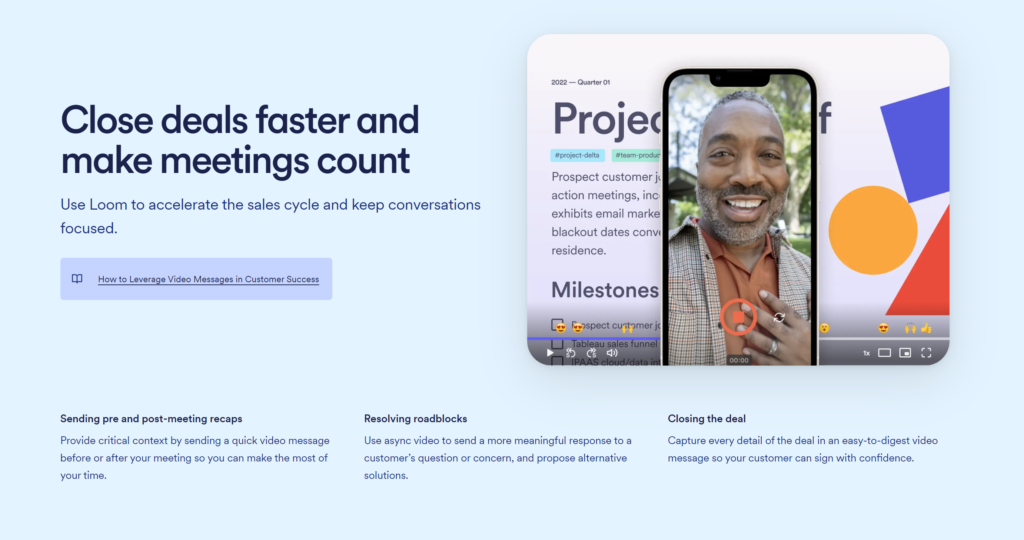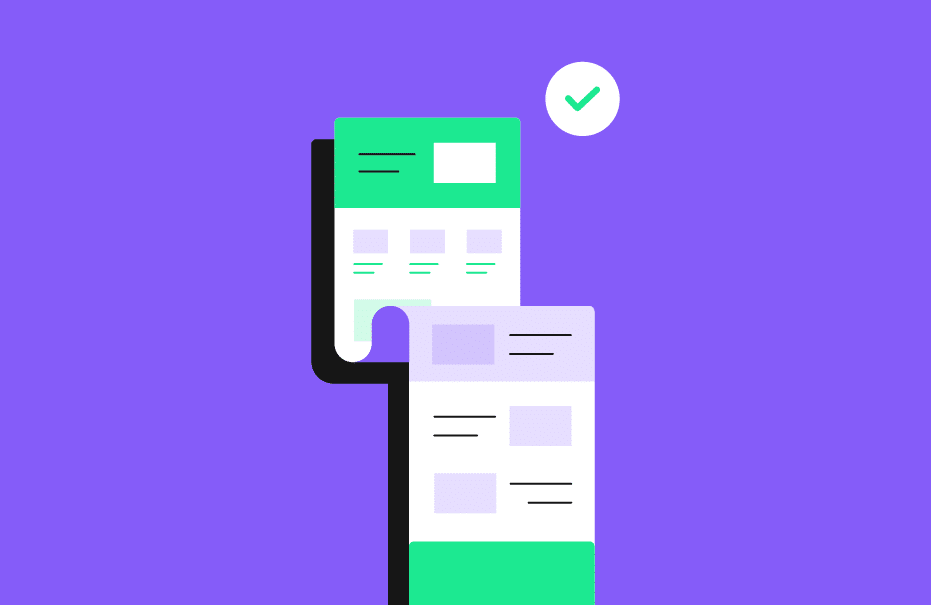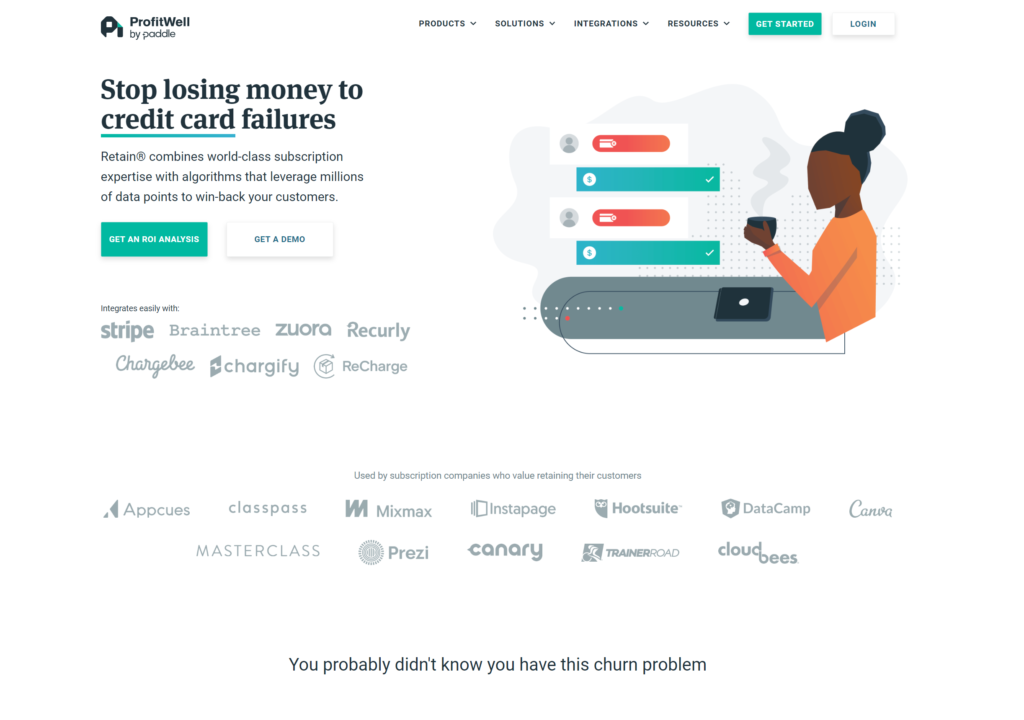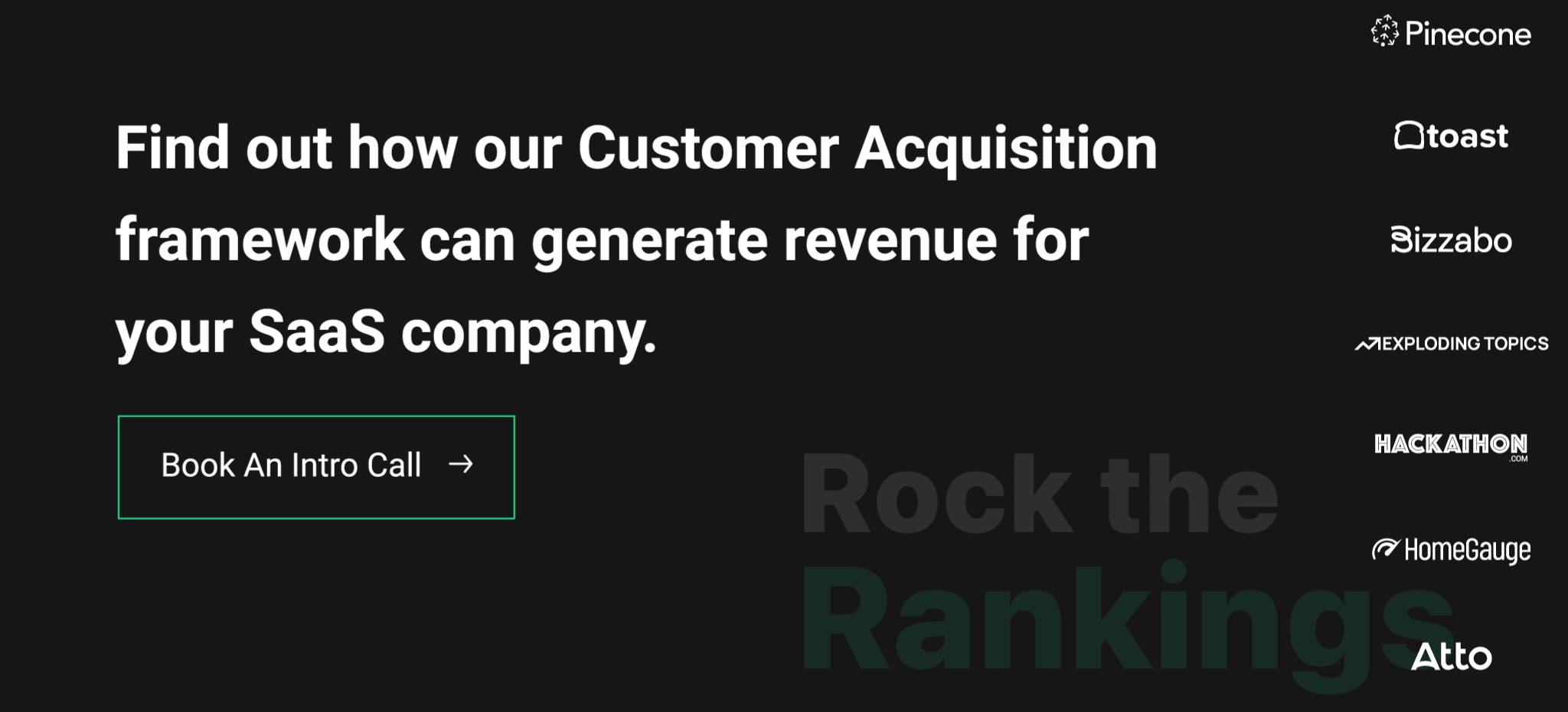The average SaaS landing page conversion rate is 2.35%
Seems super low, right?
How can we improve that to 7, 8, or even 10%+?
The answer: Through creating great copy and landing pages.
The average SaaS landing page includes:
These pages are often overly focused on features, are way too technical, and are jam-packed with jargon that prospects simply don’t understand.
SaaS companies generally fail at copywriting efforts for the following reasons:
Writing great copy that actually converts combined with the right design is a necessity for success.
If you focus on one single thing this quarter – improving landing page copy and design – I can nearly guarantee you’ll see a drastic improvement in conversions of demos and trial sign-ups.
Assuming you have already a solid flow of best-fit traffic being generated, it’s a no-brainer to build landing pages that convert before focusing on generating more traffic via other channels.
Are your landing pages sub-par?
If you’ve made it this far and you’re still following along, you probably think it does.
Let’s work on fixing that – starting now.
We use a simple framework that allows us to design killer copy for our SaaS clients that we call FUDR.
Here’s the breakdown of the framework:
If you use this simple framework, you’ll drastically improve the quality and conversions that your copy and landing pages generate.
Here’s how each part of the framework works:
Here comes the golden rule of copywriting for SaaS:
Your website’s visitors and audience don’t care about your business or your product.
They also don’t care about its features, or its benefits.
They care about themselves.
And in caring solely about themselves they naturally:
You need to flip the script, and deeply understand your audience’s problems and pains, and their desired result and outcomes to have success when your copy.
When you focus and address your copy to the reader, you’ll immediately be able to get them to understand the product, and how it can help them resolve their problem, and achieve their desired outcome.
If you don’t understand the three core components of what your audience actually cares about, you’re going to struggle to actually grab their attention, spark interest and push them to sign-up for a trial or request a demo of your product.
This is the first step in the framework that you must get right for success.
So how do you actually understand what problems your customers face, and their desired outcomes?
The majority of the ammunition you need to build great copy should come from your customers themselves.
Your customers are already telling you exactly what they want to hear.
It’s your job to listen and then make use of it in your own copy.
So where do you listen to find out this information?
These are the insights you build your copy around – directly from the words and voice of your customers.
These are also the exact same insights that will help you later when building out a deeper content strategy across marketing channels.
Related Content: B2B SaaS Content Strategy
Everything you need is right in front of you – you just need to leverage it.
Now let’s break this down for each of the categories we want to address in our copy:
In order to properly structure your page, it all starts with your potential customer’s problem.
What is the number one thing that’s keeping them up at night?
What’s causing them pain and agony during their workday that they’d pay any amount to solve?
B2B SaaS customers purchase a product because it solves a problem.
If you can clearly state the problem that your product solves:
You need to truly understand the primary problem they have, which is the one they’re willing to pay for to fix with your solution.
The next is focusing on the desired result or outcome they’ll feel after using your product.
They have a primary problem they’re looking to solve, right?
By solving this problem, what’s the desired outcome and result?
Here are a few examples:
What is it they want to achieve by solving this specific problem?
The more you can quantify the cost of not fixing the problem itself, along with the more you can help your potential customers understand the desired outcome they want to achieve and visualize how you’ll help them achieve that – the more you’re going to connect and be able to convert.
When you’re working on crafting the desired results, problem and solution – you want to keep it stupid simple.
Remember, we want to focus on what our potential customers want.
With that in mind, we should also be using their own words to describe everything.
Remember our earlier exercise to leverage our existing insights for building our copy?
Those same insights are the exact same language we can use to make it crystal clear for our potential customers in our own landing page copy.
For example, rather than saying:
“Increase customer retention by predicting churn and taking action”
Why not keep it stupid and simple, and speak their language?
“Keep more customers and stop losing money due to cancellations”
This is how we can rephrase our copy to keep it simple, cut out the jargon and speak the language of our customers.
👉 Struggling to grow demos and signups? Rock The Rankings is a top-ranked SaaS SEO Agency that helps SaaS businesses make organic their customer acquisition engine. We’ll create a free marketing plan for your business, and walk you through step-by-step exactly what needs to be done to grow faster.
Want to save a whole lot of time?
Don’t design your landing pages until you have the copy ready.
Why?
If you design first, you won’t know:
First, design your copy, and then it’s time to design.
Trust me – you’ll save a ton of time if you design after the copy is ready.
When you’re designing your landing page, also keep in mind the visuals and illustrations you use are very important to help visualize your potential customer’s problem, desired outcome, and their benefits.

Potential customers can actually see and connect the copy to the visual of specifically how you’re solving their problem.
We’re only getting halfway there if we don’t design relevant imagery and illustrations that actually create visuals in their minds – we can bridge this gap using both the words on the page plus visuals.
Test, test, and test again.
And keep refining your copy and page over time, as you start to have some conversion points.
Realistically, it’s completely normal to make changes to your copy and you’re not going to get it 100% right from the start.
Test different hooks, and figure out what resonates to hit your desired conversion rate.
Here’s a breakdown of the flow for the landing page:
This is the exact framework and page flow you can use, combined with the above insights to build copy that will convert:

Click the button below to get access to the template. 👇
What would an article on copywriting be without a few examples?
Here are a few of my favorites:
This a great example of focusing specifically on the potential customer’s problem, and keeping it simple, while using the language of the customer:

Some other things I like on this page:
There’s a lot to love about this page, and I’m sure it’s converting like crazy.

Now you should have a better idea of creating copy that speaks your customer’s language and speaks to their problem and desired outcome.
When you understand your potential customers and leverage the insights you have at your fingertips, you can set the world on fire and build killer copy that converts.
Now, what are you waiting for?
Get to building that copy, and start converting more right-fit buyers into demos and trial sign-ups.
Founder of Rock The Rankings, an SEO partner that helps B2B SaaS brands crush their organic growth goals. An avid fan of tennis, and growing micro-SaaS businesses on the weekend. 2x SaaS Co-Founder – Currently working to build and scale Simple Testimonial.
Book a 1-on-1 intro call with our founder that includes a FREE custom marketing plan. Start growing faster, today.